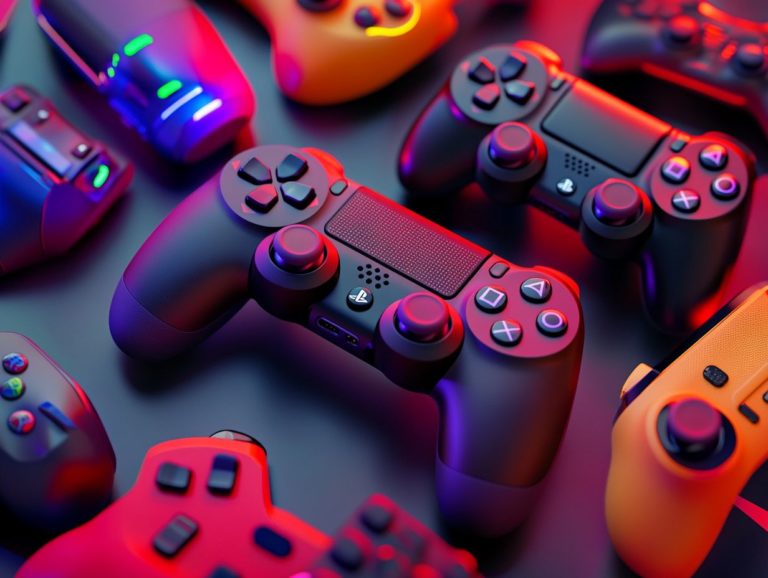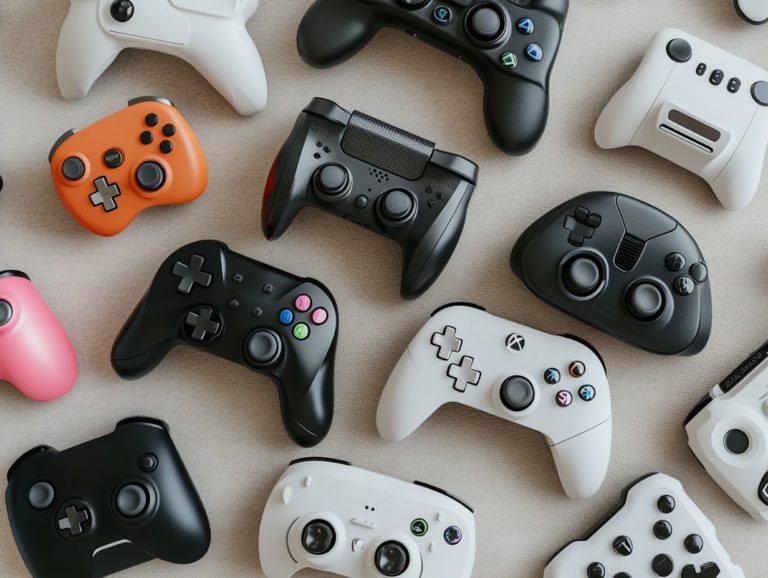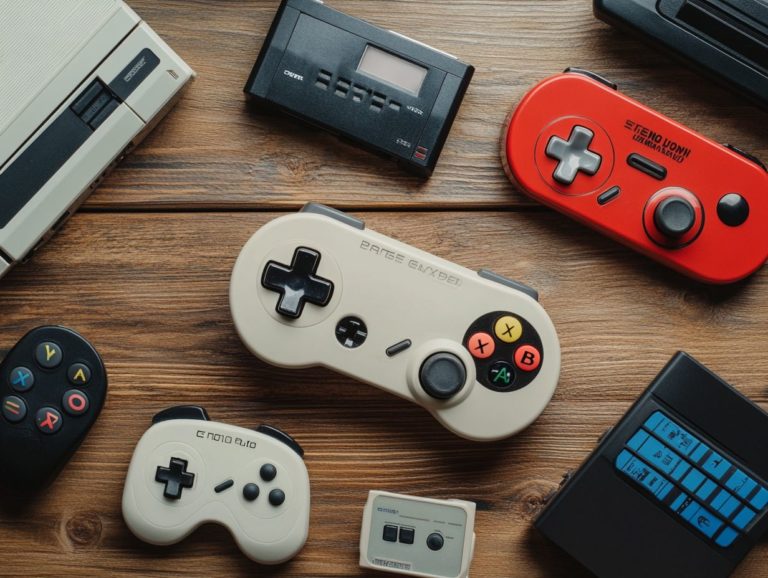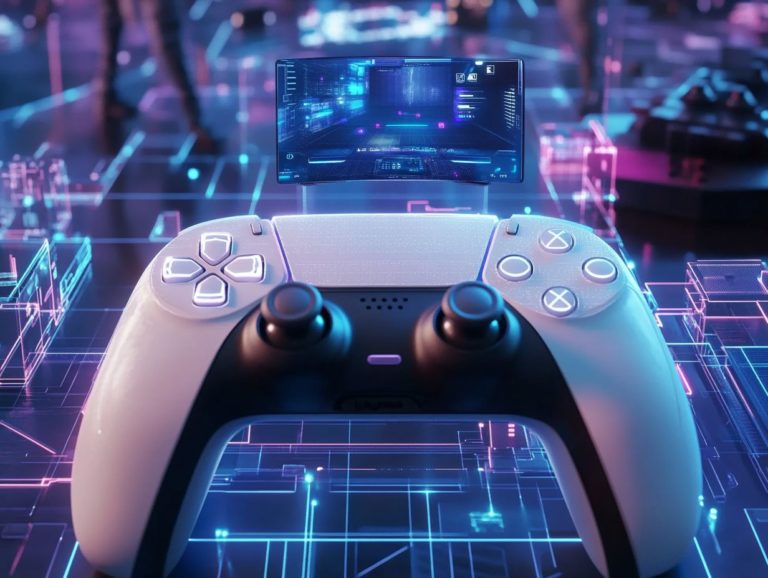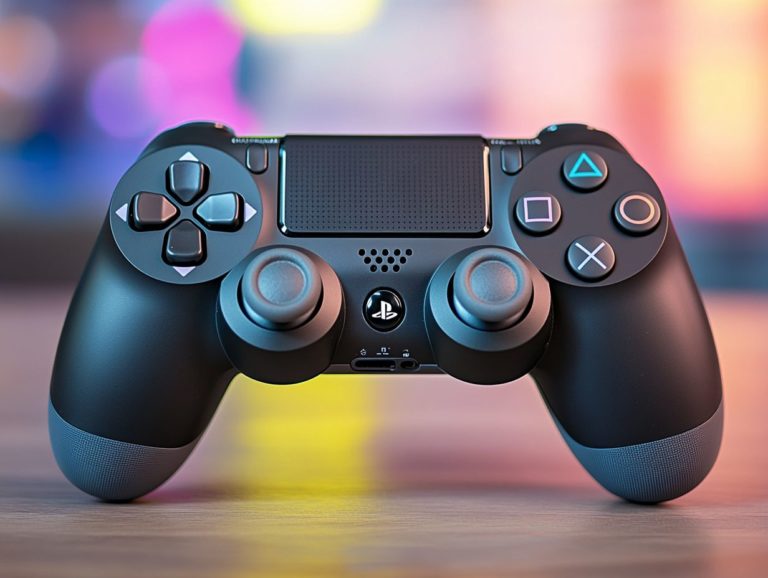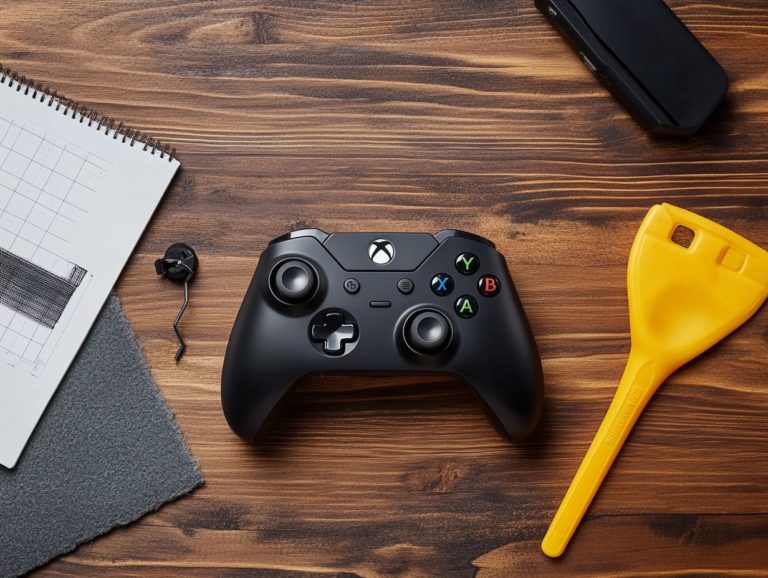how to troubleshoot controller connection issues
If you’ve ever struggled to connect your controller, you know how disruptive it can be to your gaming experience.
This guide will help you navigate common connection issues, identify symptoms, and implement troubleshooting steps.
It covers essential checks and advanced techniques, ensuring you can address these problems confidently.
You ll find tips to prevent future issues and learn when to seek professional help.
Get ready to elevate your gaming setup!
Contents
- Key Takeaways:
- Understanding Controller Connection Issues
- Troubleshooting Steps
- Preventive Measures
- When to Seek Professional Help
- Frequently Asked Questions
- What are some common causes of controller connection issues?
- How can I troubleshoot controller connection issues on my gaming console?
- How do I troubleshoot controller connection issues on my PC?
- Why is my controller not connecting to my Bluetooth device?
- How can I troubleshoot controller connection issues on my mobile device?
- What should I do if none of the troubleshooting steps work?
Key Takeaways:
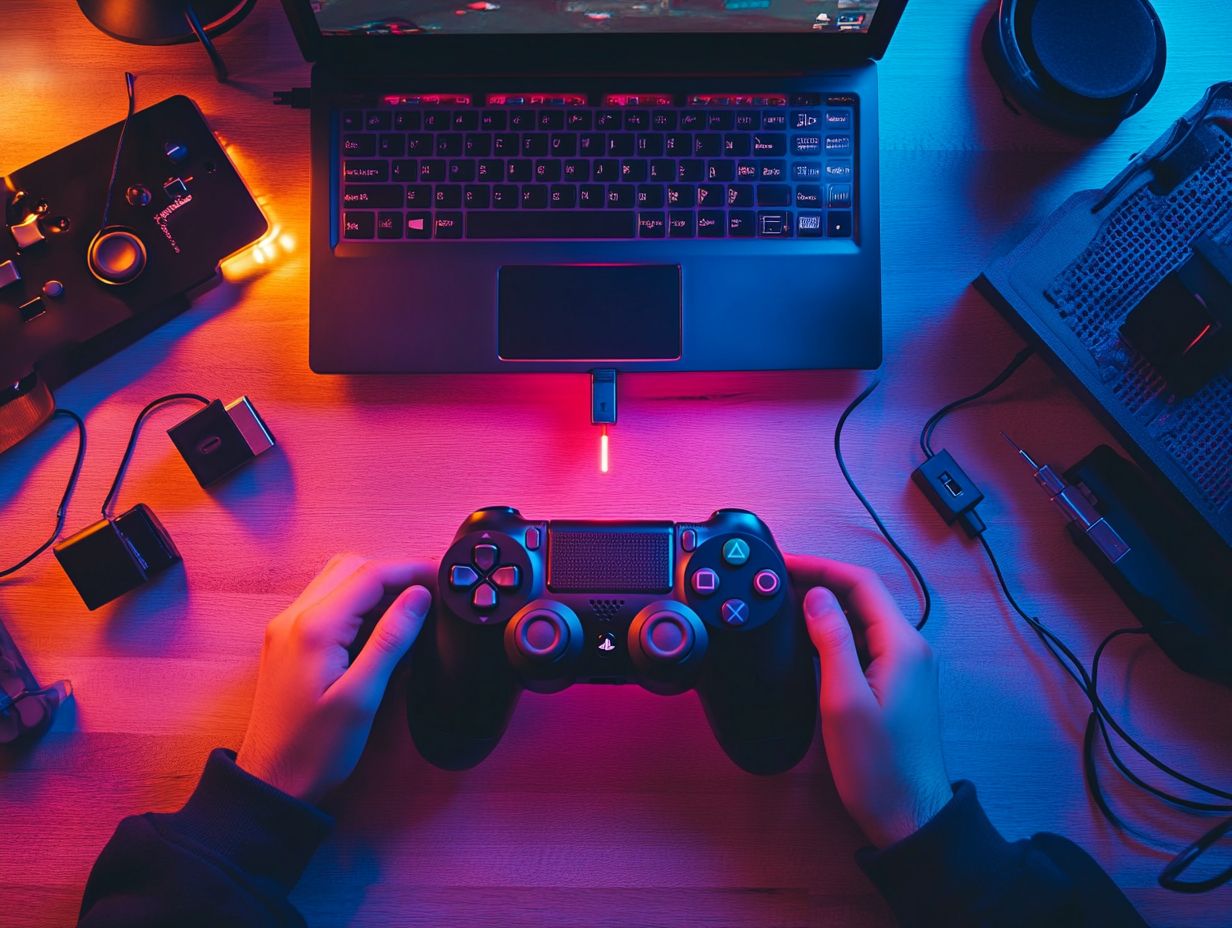
Be aware of common causes of controller connection issues, such as faulty hardware or outdated drivers, to troubleshoot effectively.
Conduct basic checks and fixes, like resetting the controller or checking for software updates, before resorting to advanced techniques.
Prevent future connection issues by regularly updating drivers and avoiding physical damage to the controller.
Seek professional help if you encounter persistent or complex problems.
Understanding Controller Connection Issues
Controller connection issues can test gamers’ patience, especially when seeking a stable Bluetooth connection on Xbox or other systems.
You might face problems like a controller that won t power on, low battery alerts, or connectivity hiccups during gameplay.
Typical culprits include outdated firmware, faulty charge cables, and compatibility issues, particularly concerning Windows 11 and Zwift support.
You can solve these issues directly to ensure seamless operation.
Common Causes and Symptoms
Recognizing the common causes and symptoms of controller connection issues is essential for effective troubleshooting, especially with Xbox and Zwift Play controllers.
If your controller won t turn on, it could often be due to low batteries or Bluetooth connection issues.
Watch for intermittent connectivity and unresponsive functions, which can stem from Xbox Accessories or the controller itself.
You may also experience lag or delayed responses during gameplay, disrupting your enjoyment.
Inconsistent light indicators on the controller might signal underlying malfunctions, making you question your setup’s reliability.
Identifying these issues early is crucial, as many can be resolved with simple solutions like resetting the controller, updating software, or improving the Bluetooth connection.
Troubleshooting Steps
Let s take a step-by-step approach to solve your controller issues!
Start with the basics: reset your controller and ensure a stable Bluetooth connection for seamless syncing.
If problems persist, consult Xbox Support documentation or use the device manager on Windows 11 to check for driver installations.
By following these steps, you ll efficiently identify the root cause and resolve those pesky connection errors.
Let s get your controller working now!
Basic Checks and Fixes
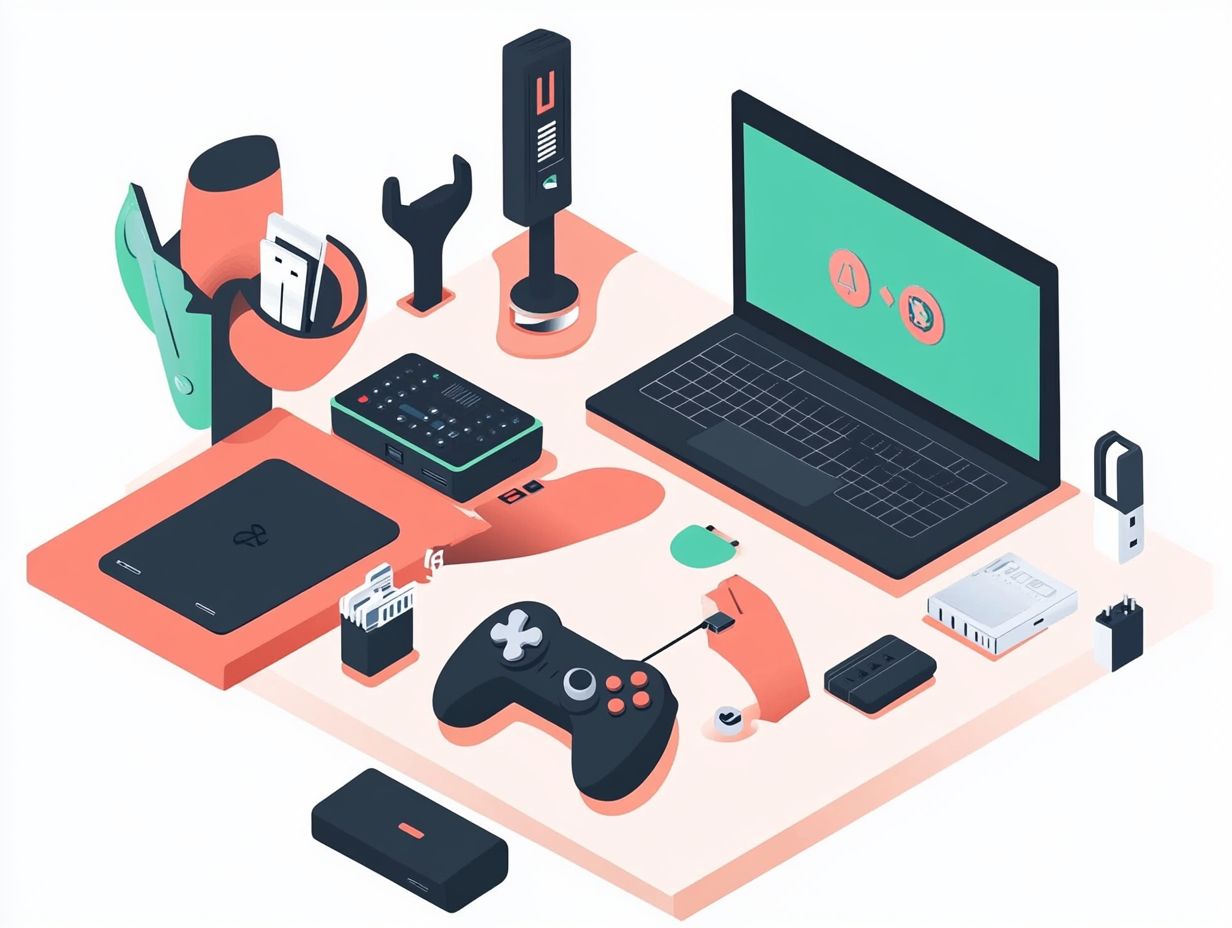
Start your troubleshooting with basic checks and fixes. They are essential when resolving controller connection issues on your Xbox or other gaming systems.
These steps help diagnose connectivity issues. Checking battery levels can save you from sudden disconnects during gameplay.
Ensuring your controller syncs correctly with the console establishes a consistent connection. Resetting the device can clear any glitches that might disrupt its performance.
If you re using a wireless controller, verifying the Bluetooth connection is vital. Signal interference can cause erratic behavior.
Inspect your Xbox Accessories for wear and tear. This helps pinpoint physical issues and can prompt necessary repairs.
Ultimately, taking these steps leads to a smoother and more enjoyable gaming experience.
Advanced Troubleshooting Techniques
Once you’ve tackled the basic troubleshooting steps, you may need to dive into advanced techniques for resolving controller connection issues.
This could involve updating the software to ensure your device is operating at peak performance. Carefully looking at your device settings for any driver-related hiccups is also important.
If connectivity woes persist, consider using automatic driver installation to help fix ongoing problems while having the support of Xbox Support.
When the usual fixes fall flat, exploring advanced strategies becomes imperative. Keeping your software updated will dramatically boost your gaming experience!
A careful examination of your device settings can reveal outdated or malfunctioning driver software that may obstruct connectivity.
If issues continue, opting for automatic driver installations simplifies the update process, ensuring you maximize your device s potential.
Throughout this process, the expertise of Xbox Support can prove invaluable. They offer tailored solutions that address your specific issues and streamline your troubleshooting experience.
Preventive Measures
Implementing preventive measures can greatly reduce the chances of encountering controller connection issues with your Xbox and other gaming systems.
Regularly maintaining Bluetooth connections, ensuring your controllers are charged, and keeping your software updated are essential practices.
Paying attention to the condition of your Xbox Accessories and reaching out to Zwift support when needed can further reduce potential problems.
Tips for Avoiding Connection Issues
Implementing specific tips to avoid connection issues can significantly enhance your gaming experience, especially as an Xbox user.
Regularly checking your Bluetooth connection and monitoring battery levels are crucial for seamless operation.
Stay informed about software updates and their impact on controller synchronization to minimize disruptive issues during gameplay.
Ensure your environment is free from unnecessary electronic interference, which can disrupt wireless signals.
Keep the controller within a reasonable distance from the console ideally no more than 10 feet away.
Perform routine checks on battery levels; sometimes, a simple charge can elevate your performance.
By following these strategies, you can enjoy a more stable gaming session without the frustration of unexpected disconnects.
When to Seek Professional Help

Know when to get professional help for controller issues. This keeps your gaming experience smooth, especially since some problems are beyond basic troubleshooting.
Consider reaching out for assistance if you face persistent connectivity issues, struggle to sync the controller despite following all recommended steps, or notice any physical damage or breakage.
Engaging with Xbox Support or a qualified technician can provide the expertise needed to effectively tackle more complex problems.
Signs That It’s Time to Call a Technician
Recognizing the signs to call a technician for controller issues is crucial to prevent further complications. Key indicators include:
- Ongoing connectivity problems that persist despite troubleshooting efforts.
- Visible defects in the controller.
- Unresponsive buttons, which may indicate deeper hardware issues.
When these scenarios arise, reaching out to Xbox Support or a qualified technician becomes essential for swiftly restoring functionality.
Unexpected lag during gameplay, unusual battery drain, or persistent error messages are red flags that signal a professional evaluation is warranted. Attempting to resolve these issues without sufficient knowledge can worsen the underlying problems.
Tackling these defects promptly enhances performance and elevates your overall gaming experience. Get expert help today to restore your controller and elevate your gaming experience now!
Frequently Asked Questions
What are some common causes of controller connection issues?
Several possible causes exist, including low battery, a faulty controller, wireless interference, or outdated drivers/software.
How can I troubleshoot controller connection issues on my gaming console?
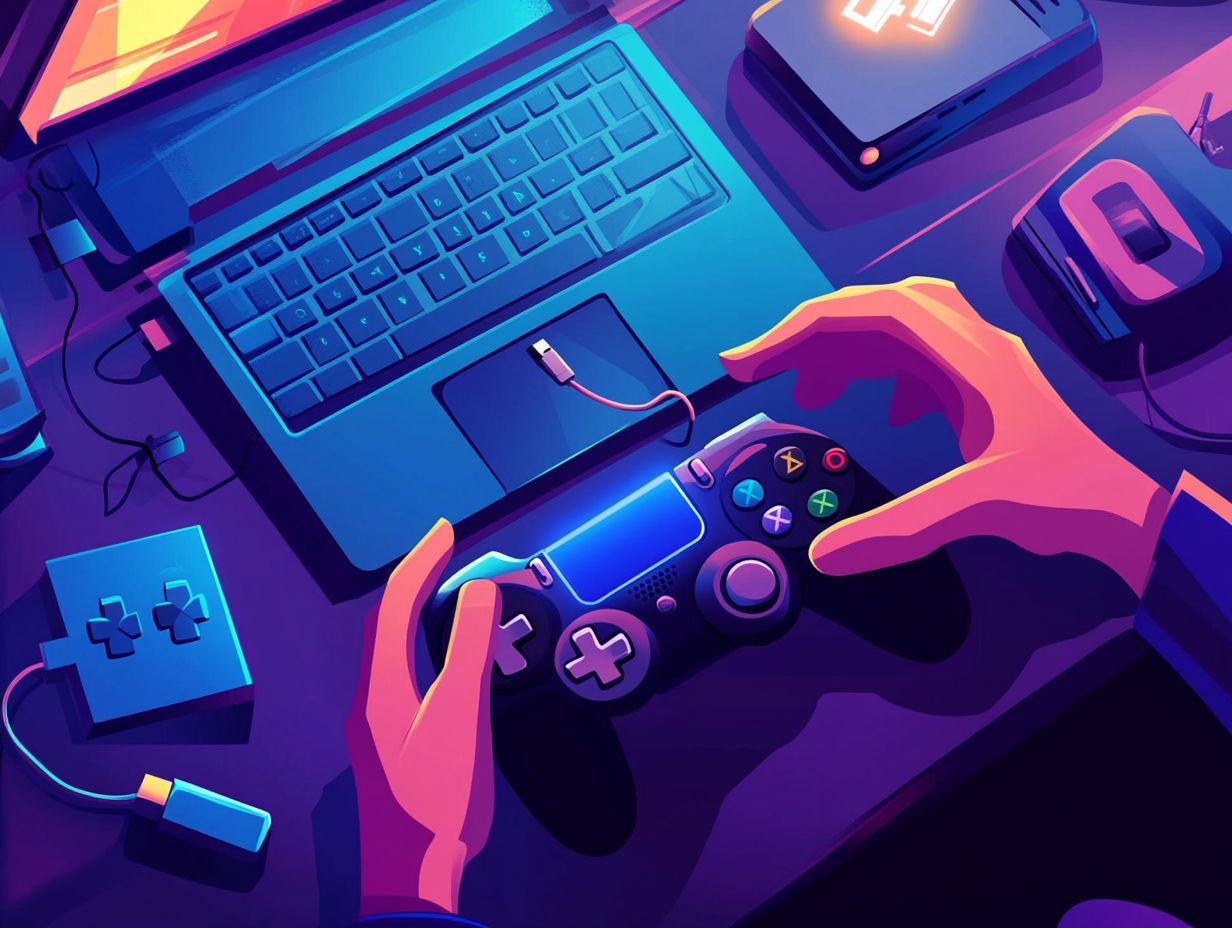
First, ensure the controller is fully charged or has fresh batteries. Next, try resetting the console and re-syncing the controller. If the issue persists, use a different controller or connect via USB cable.
How do I troubleshoot controller connection issues on my PC?
Start by checking for any available updates for your controller and PC drivers. If that doesn’t work, restart your PC and reconnect the controller. You may also need to adjust the controller settings in your game or emulator settings.
Why is my controller not connecting to my Bluetooth device?
This could be due to outdated Bluetooth drivers, interference from other devices, or range limitations. Update your drivers, turn off other Bluetooth devices, or move closer to the device you are trying to connect.
How can I troubleshoot controller connection issues on my mobile device?
Ensure your mobile device and controller are fully charged and that the controller is compatible with your device. Enable Bluetooth and pair the devices. If the problem persists, restart both devices.
What should I do if none of the troubleshooting steps work?
If you have exhausted all troubleshooting options and your controller still won’t connect, it may be a hardware issue. Contact the manufacturer for further assistance or consider getting a replacement controller.

